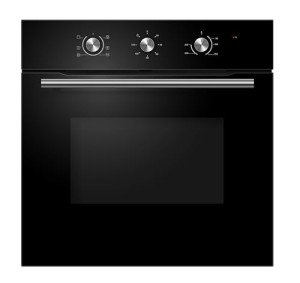Its History Of Integrated Electric Oven
The Rise of Integrated Electric Ovens: A Comprehensive Guide
Integrated electric ovens are becoming increasingly popular in modern-day kitchens due to their streamlined design, energy performance, and advanced cooking functions. Developed to blend perfectly with kitchen cabinets, these appliances not just enhance visual appeals however also provide a series of performances that cater to the culinary requirements of contemporary homes. This post will explore the benefits of integrated electric ovens, how they compare to traditional ovens, and crucial elements to think about when purchasing one.
What is an Integrated Electric Oven?
An integrated electric oven is created to be built into kitchen cabinets, offering a streamlined look that takes full advantage of area performance. Unlike freestanding Ovens And Hobs , integrated designs typically include a flush fit with kitchen cabinetry and feature styles that can match or match the surrounding kitchen decoration. These ovens usually come with a broad variety of performances, consisting of convection cooking, self-cleaning alternatives, and smart innovation functions.
Advantages of Integrated Electric Ovens
The appeal of integrated electric ovens lies in their various benefits. Below are a few of the crucial advantages:
Aesthetic Appeal
- Integrated ovens use a clean and contemporary appearance.
- They can be tailored to match the kitchen's kitchen cabinetry and style style.
Area Efficiency
- Created to make the most of the readily available kitchen space.
- Ideal for smaller sized cooking areas where freestanding designs might be cumbersome.
Advanced Cooking Features
- Many models include features such as convection heat, steam cooking, and multiple cooking modes.
- Smart ovens can even connect to Wi-Fi for remote monitoring and control.
Energy Efficiency
- Electric ovens often offer more constant heating and faster cooking times compared to gas ovens.
- More recent models are developed with energy-saving innovations, which can help in reducing energy costs.
Improved Safety
- Integrated ovens normally include functions such as automobile shut-off and child lock functions for included security.
Table 1: Comparison of Integrated Electric Ovens and Traditional Ovens
Function
Integrated Electric Oven
Conventional Oven
Design
Built-in, flush-fitting
Freestanding, takes up more area
Cooking Efficiency
Typically quicker, more even warming
Varies, generally longer heat up
Aesthetic Integration
Smooth with cabinetry
Standout device
Space Usage
Space-saving
Needs more flooring area
Advanced Features
Often consists of smart technologies
Limited technological combination
Energy Efficiency
Usually more energy-efficient
Can differ by model
Secret Features to Look For in Integrated Electric Ovens
When shopping for an integrated electric oven, different functions should be taken into consideration to ensure you pick a model that fits your cooking design and preferences. Here are some crucial functions to consider:
Size and Capacity
- Look for ovens that fit within your kitchen cabinetry and examine internal capability based on your cooking needs.
Cooking Modes
- Consider designs that offer numerous cooking functions consisting of bake, broil, steam, and convection to expand cooking possibilities.
Self-Cleaning Options
- Self-cleaning modes save effort and time in keeping the oven.
Control Options
- Touchscreen controls or wise tech integration for remote gain access to can include convenience to cooking.
Energy Rating
- Pick energy-efficient models with excellent rankings to make sure lower operating costs.
Warranty and Support
- Look for warranties to cover repairs and replacements and the availability of customer care.
Frequently asked questions
Q1: What makes integrated electric ovens different from built-in ovens?
A1: Integrated electric ovens are specifically designed to blend into cabinets, offering a smooth aesthetic, while built-in ovens may not always have the same flush design and often stand apart more as specific appliances.
Q2: Are integrated electric ovens more pricey than traditional ovens?
A2: Generally, integrated electric ovens can be more expensive due to their design and advanced features. However, the long-term energy cost savings and enhanced efficiency frequently offset the initial cost.
Q3: How do I ensure appropriate setup of an integrated electric oven?
A3: It is recommended to employ an expert for installation, as integrated ovens require exact measurements and can include electrical connections that need to comply with local building regulations.
Q4: Can I tailor the appearance of my integrated electric oven?
A4: Yes, many producers use adjustable panels or finishes to match your kitchen cabinetry, permitting for a fully integrated look.
Q5: What upkeep does an integrated electric oven usually require?
A5: Regular cleaning, particularly after heavy usage, and examining seals and vents for wear are advised to maintain the oven's functionality and appearance.
In conclusion, integrated electric ovens are a practical and stylish addition to contemporary kitchens. Their benefits consist of visual appeal, energy performance, and advanced cooking features, making them a popular choice for home cooks. Comprehending the crucial attributes and comparing various designs can help consumers make informed getting decisions and select an integrated oven that best suits their culinary needs and kitchen style. With their seamless integration and technological developments, these ovens are poised to become staples in the kitchen for many years to come.
